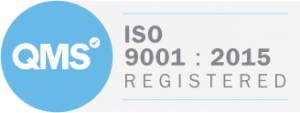
Which all employee incentive plan best suits your business – SIP or SAYE?
Before looking at the important differences between Share Incentive Plan (SIP) and Save As You Earn (SAYE), we need to first understand the reason they were created and why the government is currently considering evidence of their effectiveness.
The UK government offers four different tax-advantaged employee share schemes. Two of the schemes – Enterprise Management Incentives (EMI) and Company Share Option Plan (CSOP) – are discretionary share schemes (although they could be issued to all employees). The SIP and SAYE share schemes, however, must be offered to all employees.
The intention behind all of the plans is to align shareholder and employee interests by encouraging an employee to own shares in their company. Ultimately, the share plans have a focus on improving growth and productivity in UK businesses.
All of these share plans have a cost to the Treasury, because of the Income Tax (IT) and National Insurance contributions (NICs) savings that they provide. In the tax year 2020-21, the SIP and SAYE schemes together cost approximately £310 million in IT and NICs reliefs.
From time to time, the Treasury and HMRC commission research to ensure that share plans continue to achieve their stated aims, and that public funds are being used effectively.
The most recent report on SIP and SAYE (which also included CSOP) was produced by London Economics in June 2023. The evaluation undertaken offered a valuable insight into the use of the three share plans, the reasons the plans were adopted, and the impact on that business in terms of commercial success, job creation, staff retention and productivity, among others.
You can read the London Economics evaluation report in detail here, but the highlights that relate to SIP and SAYE, the plans that help work towards broader employee ownership, can be summarised briefly by the following:
- Companies mostly choose share schemes to improve employee engagement, offering CSOP, SAYE or SIP to create a feeling of ownership (50%), help retain staff (32%), retain skilled employees (24%), attract skilled employees (21%) and improve staff morale (26%).
- CSOP, SIP and SAYE appear to improve business and employment outcomes, with 81% of the surveyed companies indicating an improvement in employment and/or business outcomes, mostly related to staff retention and recruitment.
- Some surveyed companies and participating employees reported how the schemes have a positive impact on employee productivity and provide a sense of connection to the business, which improved company performance.
- Most businesses questioned reported that they generally believed the current delivery mechanism for the share schemes was appropriate and did meet the intended aim of aligning business and employee interests to drive growth and job creation.
- Reasons companies did not use share schemes included not wanting employees to have controlling interest (27%) and not meeting the eligibility requirements (15%).
- There was also a broad indication that changing the maximum limits (upwards or downwards) would have no impact on the likelihood of a business opting into a scheme, although an increase in the limits might incentivise more senior staff.
Following the London Economics report for HMRC, in the Spring Budget 2023 the government launched a call for evidence on SAYE & SIP schemes. A variety of companies and advisers responded, with the key suggestions for change relating to simplifying the plans, aligning the savings periods of the two schemes and increasing the scheme limits, which have not changed in some time.
The call for evidence is now closed and we are currently awaiting the government’s response.
Whether the government makes changes after the results of its call for evidence, it is clear from the London Economics July 2023 report that tax-advantaged employee share schemes are delivering the outcomes for which they were designed, to encourage increased employee share ownership.
With increased publicity currently surrounding the benefits of employee ownership, there is undoubtedly going to be more interest from privately owned businesses in tax-advantaged employee share schemes, which is why it’s worth comparing two popular all employee share ownership plans.
SAYE vs SIP: which employee incentive scheme is best for your business?
When considering sharing ownership of your business with the people who help it succeed, your employees, you can choose from a number of share plans designed to deliver high employee engagement and a strong ownership culture.
Some of the current share plans offer tax advantages and the one you choose will depend on a number of factors, such as size of the business, who you want to share ownership with, how much flexibility you want and what tax advantages make it work for everyone involved.
Two of the popular share plans, which featured in the HMRC sponsored report are the Share Incentive Plan (SIP) and Save As You Earn (SAYE) scheme.
We’ll now look at the tax benefits available for each plan, what it takes to implement one and how easy they are to manage and remain compliant for the life of the plan. Hopefully, once you’ve read the second part of this article, it will help you decide which is right for you, your people and your business.


